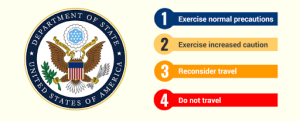By Dana Goodyear | The New Yorker

PHOTOGRAPH: Mark J. Rebilas
In 1977, the San Joaquin Valley—the swath of agricultural land that runs through central California—was designated a disaster area. Record-low runoff and scant rainfall had created drought conditions. At the beginning of Christmas week, the weather was normal in Bakersfield, the city at the Valley’s southern end, but in the early hours of December 20th a strong wind began to blow from the Great Basin through the Tehachapi Mountains. Hitting the ground on the downslope, it lofted a cloud of loose topsoil and mustard-colored dust into the sky.
The plume rose to five thousand feet; dust blotted out the sun four counties away. Traffic on Highway 5, the state’s main artery, stopped. At a certain point, the anemometers failed; the U.S. Geological Survey estimated wind speeds as high as a hundred and ninety-two miles an hour. Windows on houses were sandblasted to paper thinness.
The Tempest from Tehachapi, as one researcher called it, spread dirt over an area the size of Maine. Twenty hours afterward, the dust reached Sacramento, four hundred miles north of Bakersfield, in the form of a murky haze that hung in the air for another day, stinging the eyes and noses of the residents. On the twenty-first, it started raining in Sacramento, which turned the dust to mud, coating the cars and sidewalks, and marked the end of the drought.
Over the next several weeks, Sacramento County recorded more than a hundred cases of coccidioidomycosis, otherwise known as valley fever, or cocci, a disease caused by inhaling the microscopic spores of Coccidioides immitis, a soil-dwelling fungus found in Bakersfield. (In the previous twenty years, there had never been more than half a dozen cases a year.) Six of the victims died.
In soil, C. immitis exists in chains of barrel-shaped units called arthroconidia; airborne, these fragment easily into lightweight spores. C. immitis is adapted to lodge deep: its spores are small enough to reach the end of the bronchioles at the bottom of the lungs. We can breathe them in, but we can’t breathe them out. Once in the lung, the spore circles up into a spherule, defined by a chitinous cell wall and filled with a hundred or so baby endospores. When the spherule is sufficiently full, it ruptures, releasing the endospores and stimulating an acute inflammatory response that disrupts blood flow to the tissue and can lead to necrosis. The endospores, each of which will become a new spherule, travel through the blood and lymph systems, allowing the cocci to spread, as one specialist told me, “anywhere it wants.” In people with weakened immune systems, cocci can take over.
Every year, there are some hundred and fifty thousand cases. Only forty per cent of people infected are symptomatic, and the signs—fever, cough, exhaustion—can be hard to distinguish from the flu. A small subset of patients will suffer long-term health problems; in fewer still, cocci will disseminate from the lungs into other tissue—skin, bones, and, often fatally, the meninges of the brain. For those with cocci meningitis, the treatment can be brutal. Three times a week, in the hospital, patients are administered an anti-fungal called amphotericin B—“amphoterrible” is how doctors refer to it—with a needle to the base of the skull. To prevent headaches, patients sometimes rest for several hours with their feet elevated above their heads. One patient, a twenty-six-year-old white woman who caught valley fever four years ago, told me that the medicine made her vomit non-stop on a negative incline. She was temporarily paralyzed, underwent three brain surgeries, and has had twenty-two spinal taps. Not long after her diagnosis, the doctors told her mother to make funeral arrangements. Now they tell her she will be on anti-fungals, funnelled through a shunt in her brain, for the rest of her life.
Cocci is endemic to the desert Southwest—California, Arizona, New Mexico, Nevada, Texas—and to the semi-arid parts of Central and South America. Digging—building, drilling, tilling, clearing—stirs it up, and dry, hot, windy conditions, a regional feature intensified by climate change, disperse it. In recent years, infections have risen dramatically. According to the Centers for Disease Control, from 1998 to 2011 there was a tenfold increase in reported cases; officials there call it a “silent epidemic,” far more destructive than had been previously recognized. Its circumscribed range has made it easy for policymakers to ignore. Though it sickens many times more people than West Nile virus, which affects much of the country, including the Northeast, it has received only a small fraction of the funding for research. “The impact of valley fever on its endemic populations is equal to the impact of polio or chicken pox before the vaccines,” John Galgiani, an infectious-disease physician who directs the Valley Fever Center for Excellence, at the University of Arizona in Tucson, says. “But chicken pox and polio were worldwide.”
In 2012, valley fever was the second-most-reported disease in Arizona; two-thirds of the country’s cases occur in the state. There is no vaccine to protect against it and, in the most severe cases, no cure. The population of Phoenix has grown by ten per cent in the past decade, and newcomers have no acquired immunity. The elderly and the immune-compromised—including pregnant women—are most susceptible; for unknown reasons, otherwise healthy African-Americans and Filipinos are disproportionately vulnerable to severe and life-threatening forms of the disease. (In one early study, Filipino men were estimated to be a hundred and seventy-five times as likely as white men to get sick from cocci, and a hundred and ninety-two times as likely to die from it.) But, as one specialist told me, “if you breathe and you’re warm-blooded, you can get this.”
Back to News
